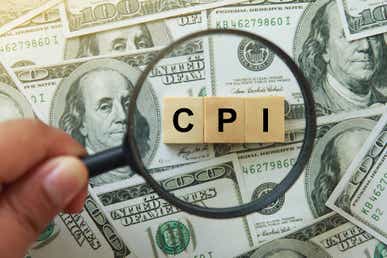2023 Bond Market Outlook

2023 Bond Market Outlook
2022 was a rough year for financial markets. Even though US equity markets declined double digits, in excess of -20% in some cases, the bond market did not prove to be a bastion of safety: the S&P US Aggregate Bond Index was down over -11.5% by the last week of December 2022. From US Treasuries to investment grade to high yield, it was a bad year, through and through.
But the disappointment of 2022, spurred by multi-decade highs in inflation and the most aggressive central bank rate hike cycles since the 1970s, may be a relic of the past. The groundwork is laid for 2023 to be a better year for bonds, especially for US Treasuries - 2-year (/ZT), 10-year (/ZN), and 30-year (/ZB). Here are three reasons why:
1. “Fed Ratio” Perspective: Bond Yields Outpace Stock Earnings & Dividend Yields
In the post-World War II era, US equity markets have had a higher annualized return than US Treasuries. However, stocks also carry more risk, and thus returns have been more volatile. Specifically, the standard deviation of stock market returns has been higher than those of the bond market.
While stocks carry additional risk relative to bonds, the expected excess return of stocks over bonds makes them a potentially more appealing investment target. One way to measure this trade-off is by using the Fed Model, which compares the earnings yield (E/P; the inverse of the P/E ratio) of the S&P 500 to US Treasury 10-year yield.
As long as the earnings yield of the broader stock market remains higher than the yield on bonds, then it would follow that investors would favor stocks over bonds. However, if the S&P 500’s earnings yield drops below the US Treasury 10-year yield, why would investors take on additional risk to earn a lower return?
The US Treasury 10-year bond and 30-year bond yields are entering 2023 at 3.880% and 3.975%, respectively. By comparison, the Dividend Aristocrat ETF (NOBL) has a dividend yield of 2.6% heading into next year. The S&P 500 (/ES) has a P/E ratio of 19.97, giving an earnings yield of 5.01%. For many investors, the close proximity of US Treasury yields relative to earnings yields and dividend yields will make US Treasuries, particularly at the long-end of the yield curve (/ZN and /ZB) an alluring prospect in 2023.
2. The Fed Rate Hike Cycle May Be Finished
The Federal Reserve will very likely raise interest rates a few more times in 2023 - but not much more than that. Even so, with the FOMC outlining its case in December 2022 for its main rate to end 2023 at 5.1%, interest rate markets are not in agreement. In fact, according to Fed Funds futures, the Fed’s main rate will peak at 4.97% by mid-2023 before subsiding to 4.65% by the end of next year.
Assuming that the market is correct in its view, then the short-end of the US Treasury yield curve may not seem significant upwards pressure (i.e. further decline in prices) for much longer. Fed policy, aimed at the short-end of the yield curve, tends to have a greater impact on 2-year notes (/ZN) than those at the long-end of the yield curve. 2-year notes, which lost -6% in 2022 as the 2-year yield rose from 0.766% to 4.428%, may be poised to rally - particularly in the second half of 2023.
3. US Inflation Rates May Finally Have Peaked
Federal Reserve policymakers were maligned for all of 2022 for calling the rising in inflation rates ‘transitory. But for all the hand wringing over the term transitory, elevated US inflation rates may actually be just that (granted, for longer than many anticipated). Recent inflation readings on a month-over-month basis showed a sharp deceleration in price pressures over the past few months, which puts headline US inflation on track to return to the +2% to +4% range by mid-2023 (really!).
Coupled with the prospect of an economic slowdown and potentially a recession in the US in 2023, the long-end of the US Treasury yield curve, with elevated interest rates - in both real and nominal terms - may appear to offer great value heading into next year. The long-end of the US Treasury yield curve captures both growth and inflation expectations, which have been subsiding in recent months. 10-year notes (/ZN), which lost -13.93% in 2022 as the 10-year yield rose from 1.513% to 3.880%, and 30-year notes (/ZB), which lost -21.87% as the 30-year yield rose from 1.902% to 3.975%, may be positioned for a strong performance throughout 2023.
— Written by Christopher Vecchio, CFA, Head of Futures & Forex
Options involve risk and are not suitable for all investors. Please read Characteristics and Risks of Standardized Options before deciding to invest in options.